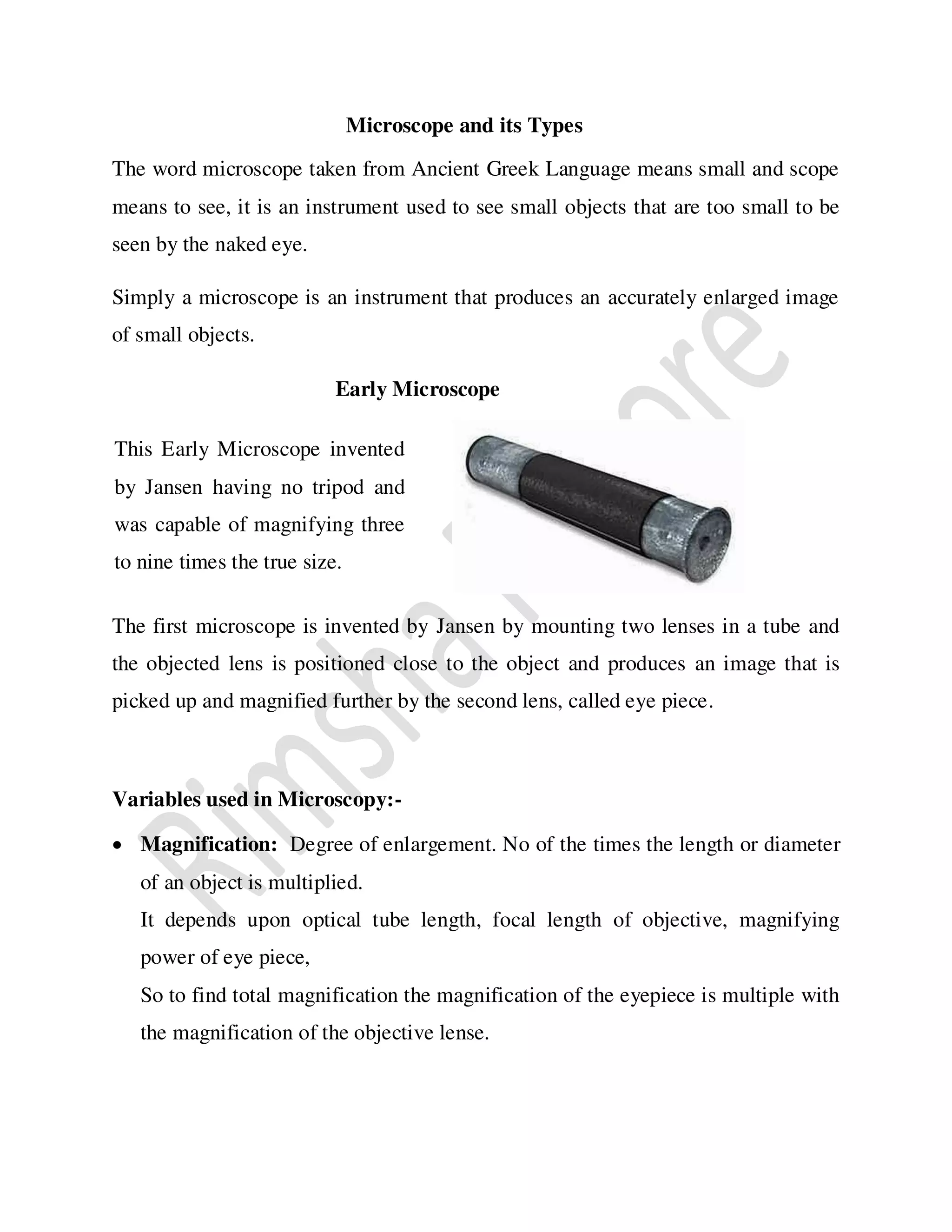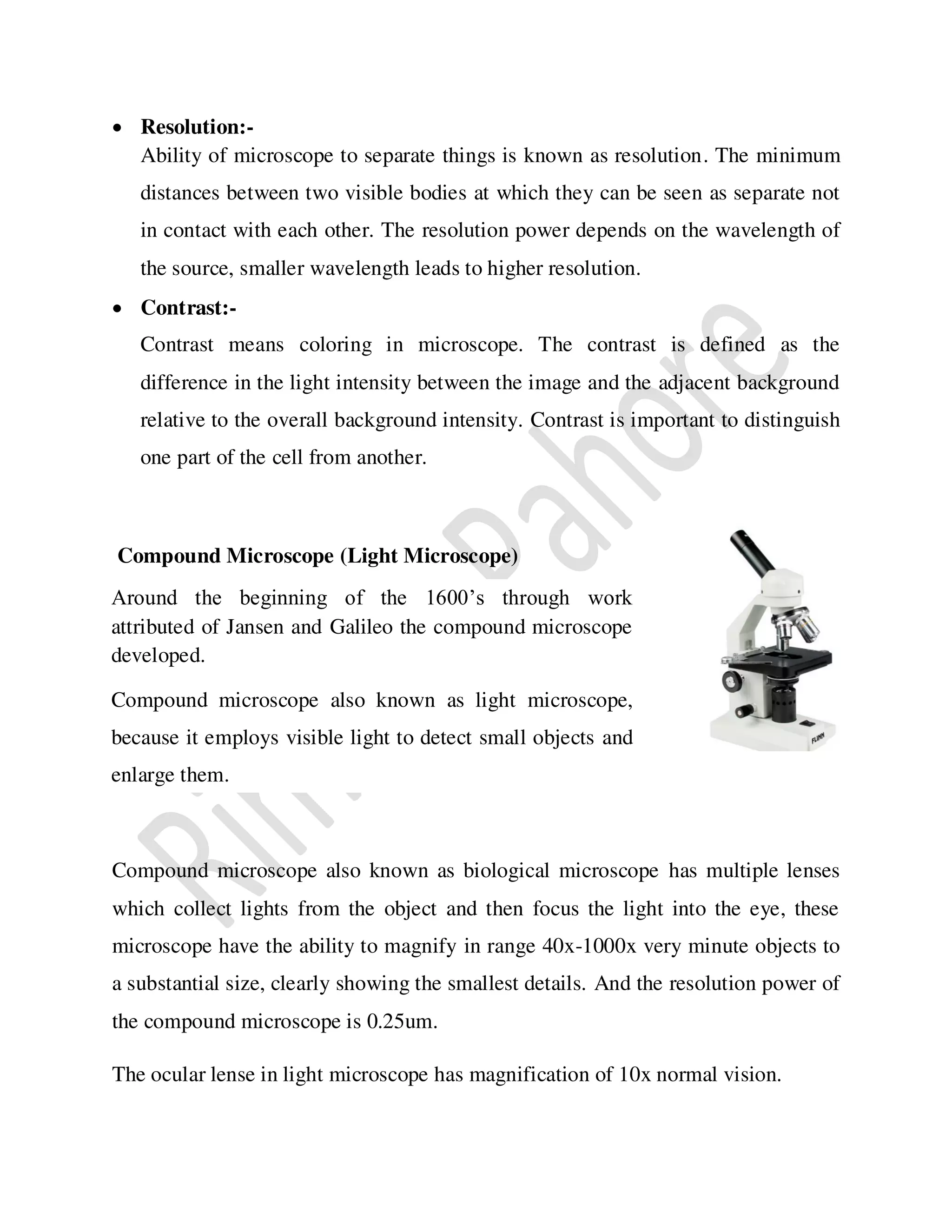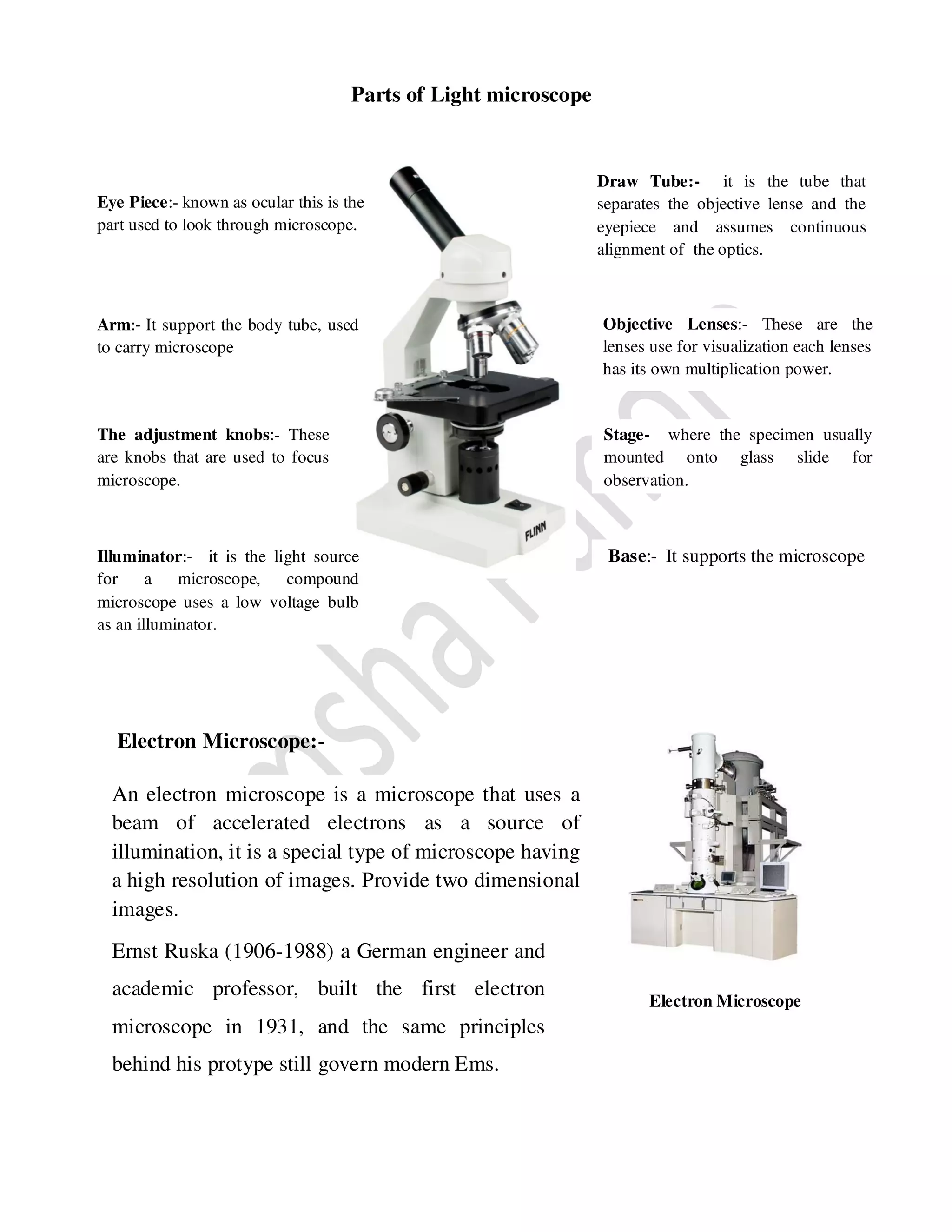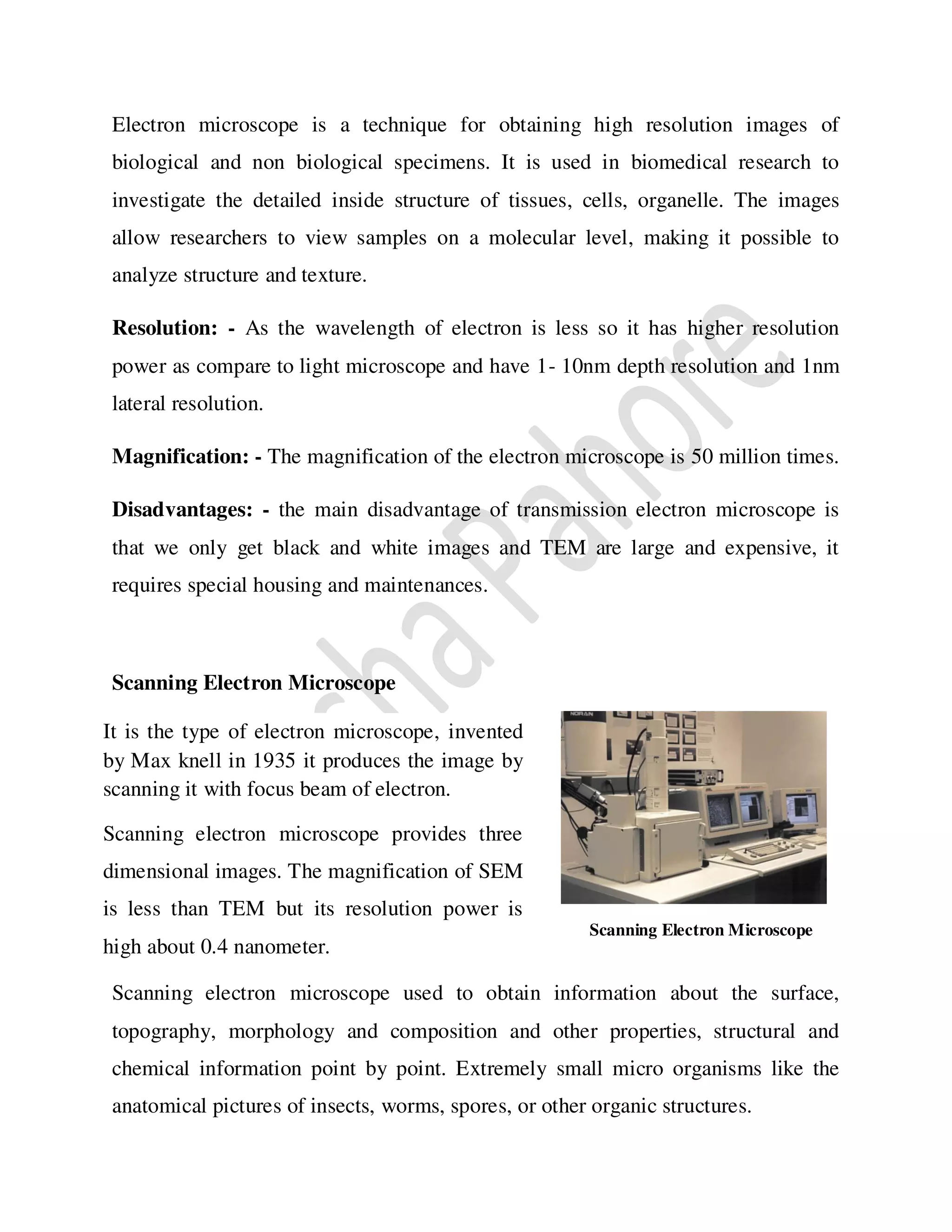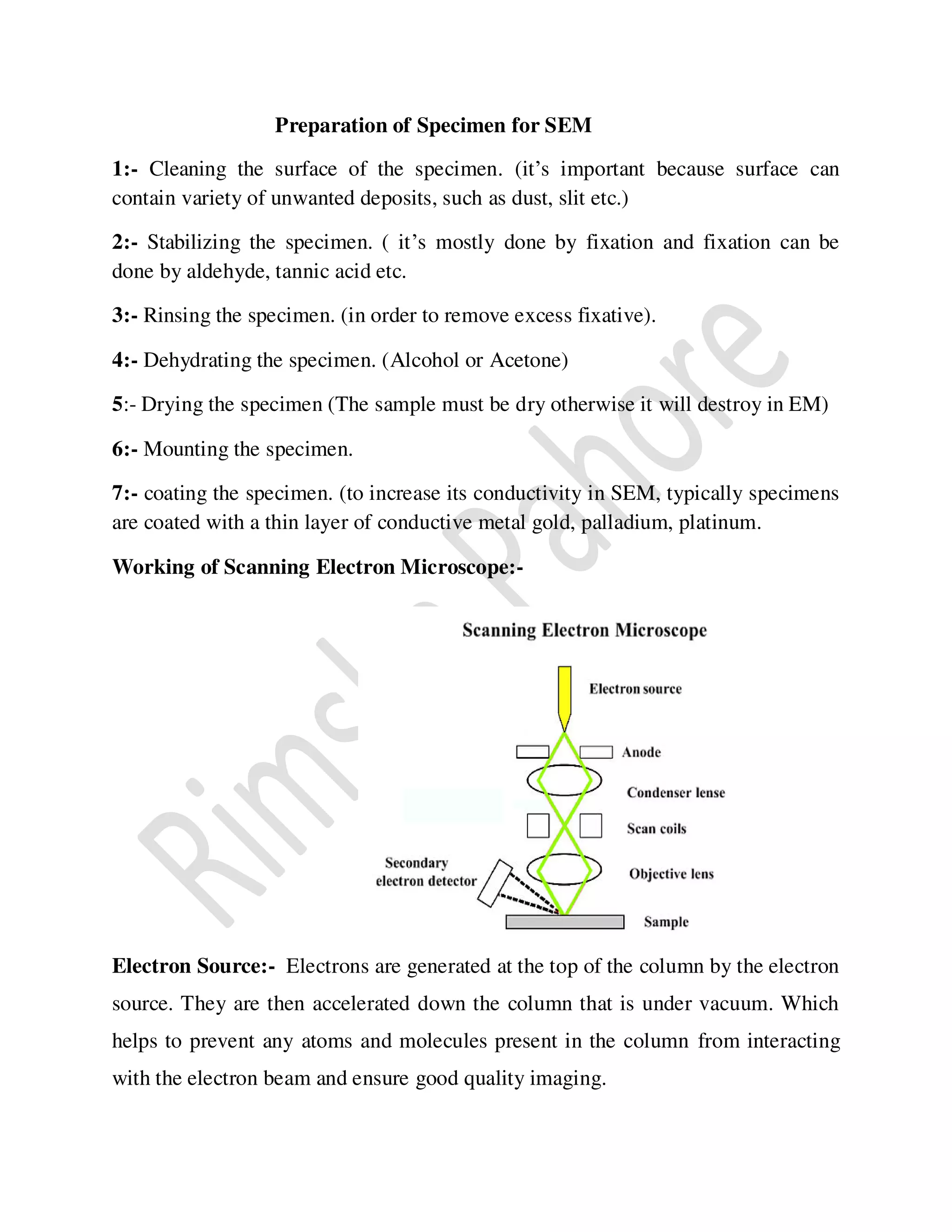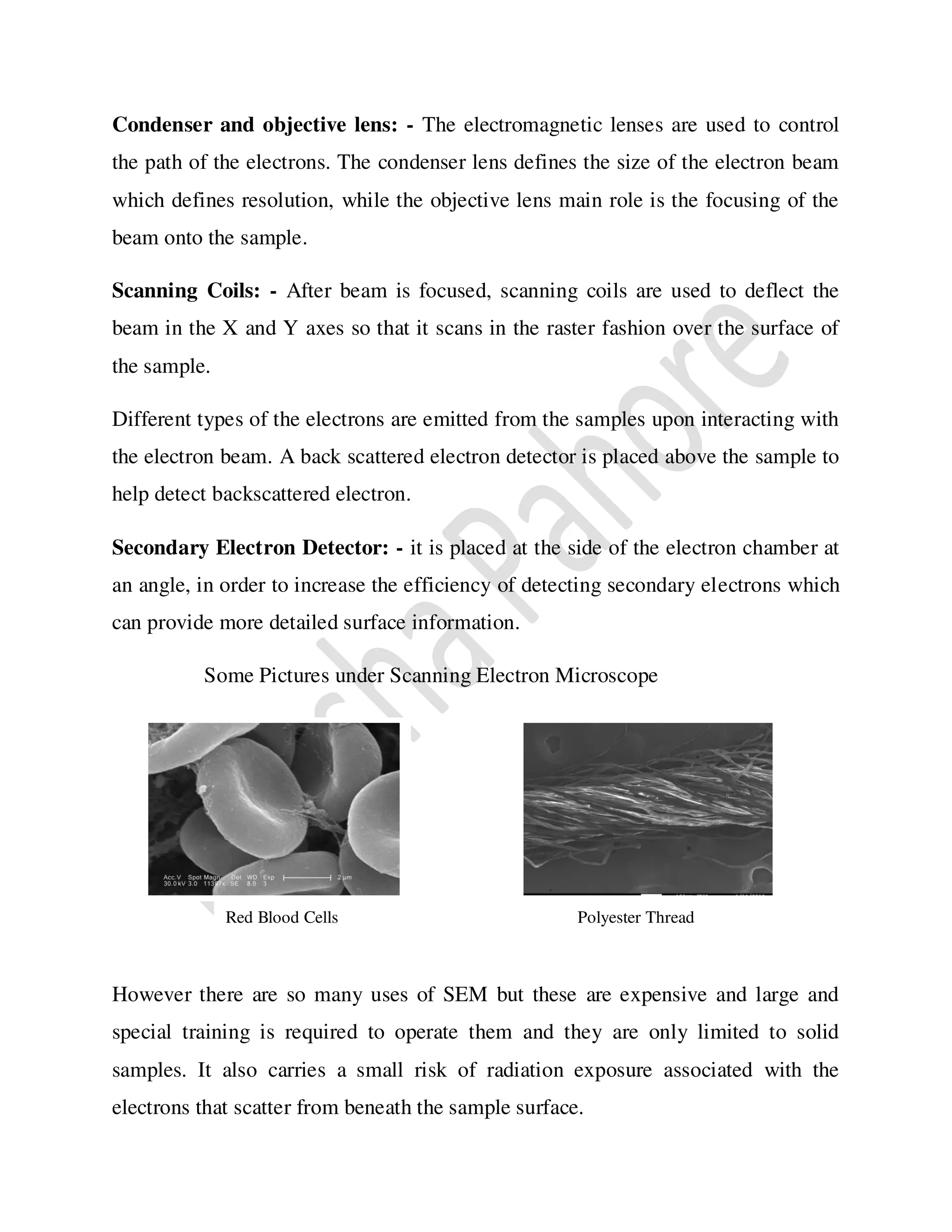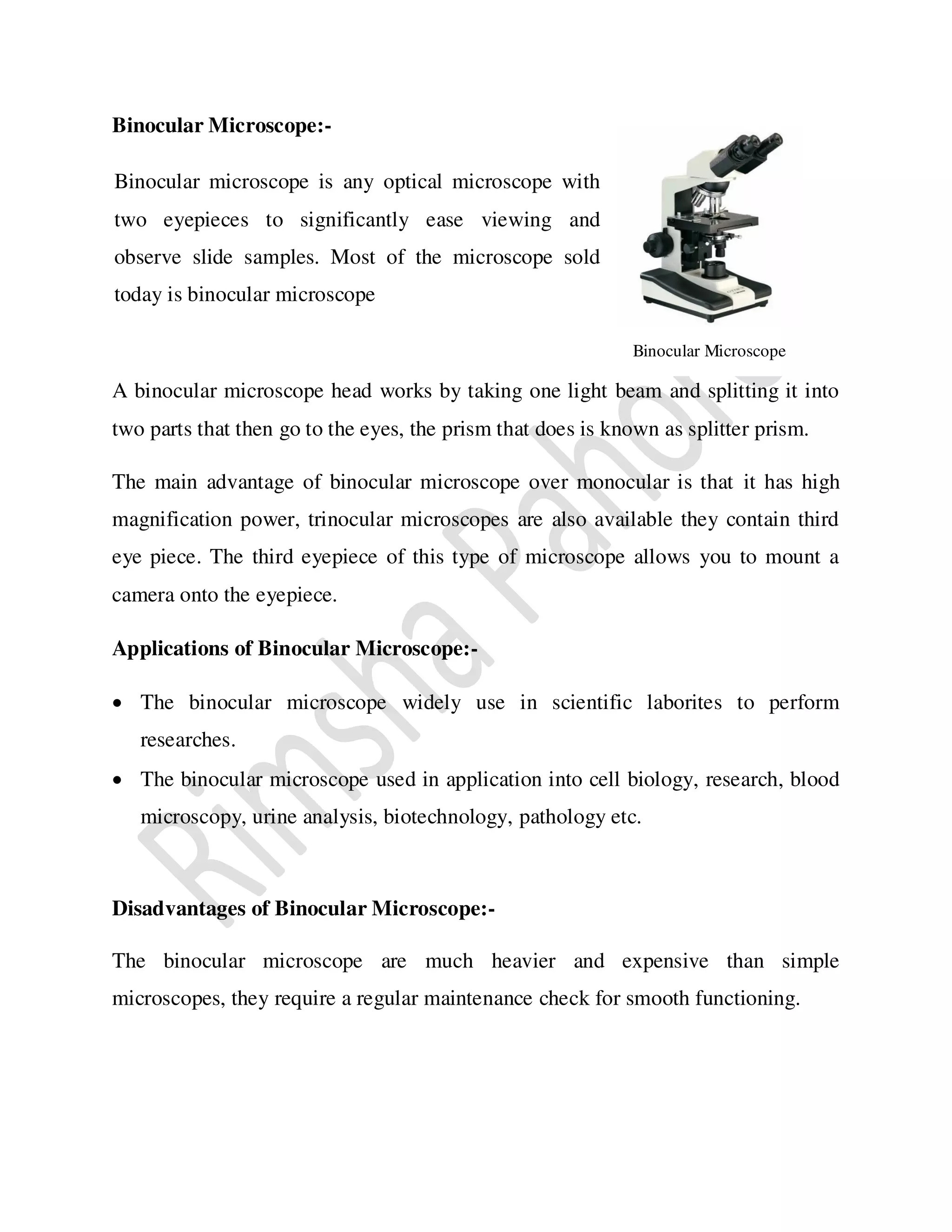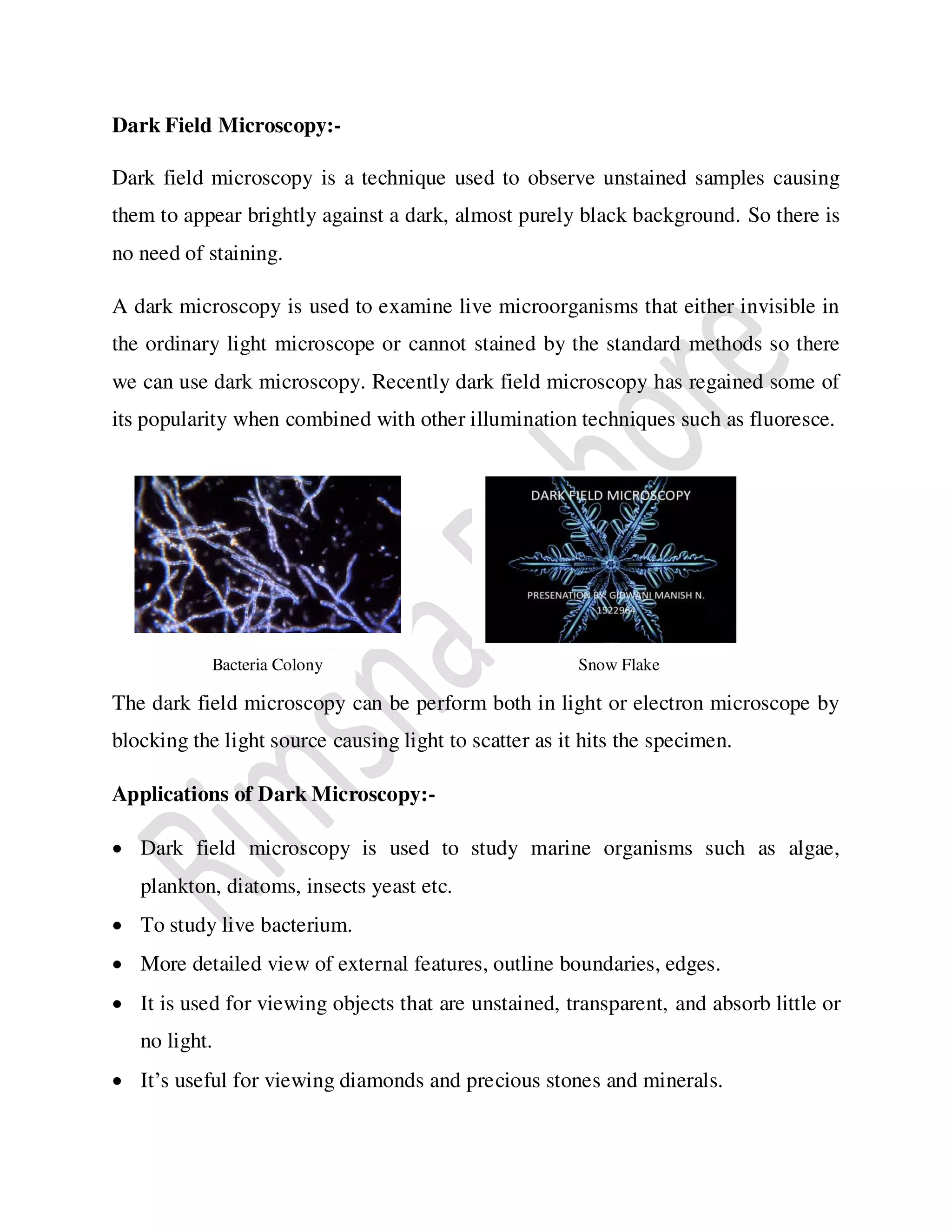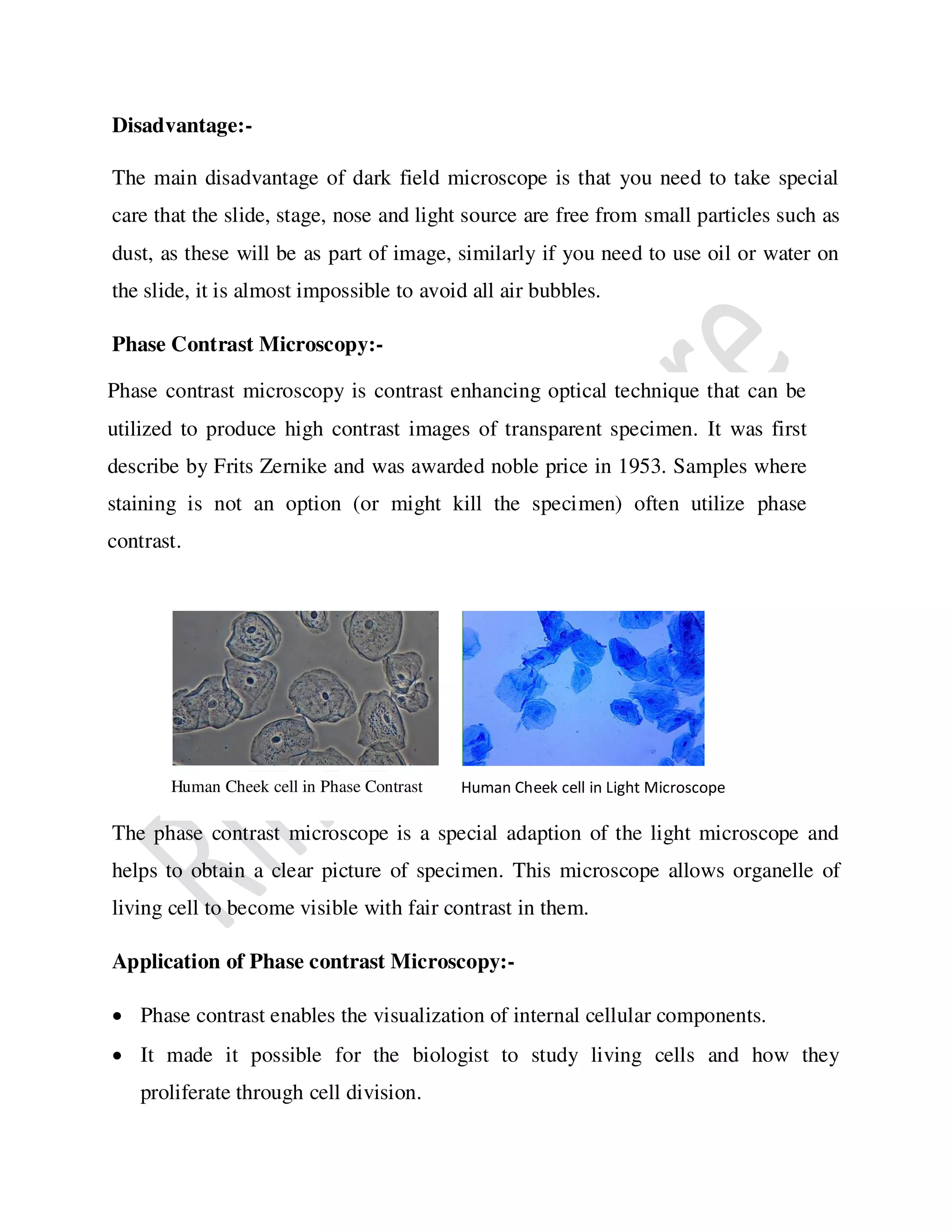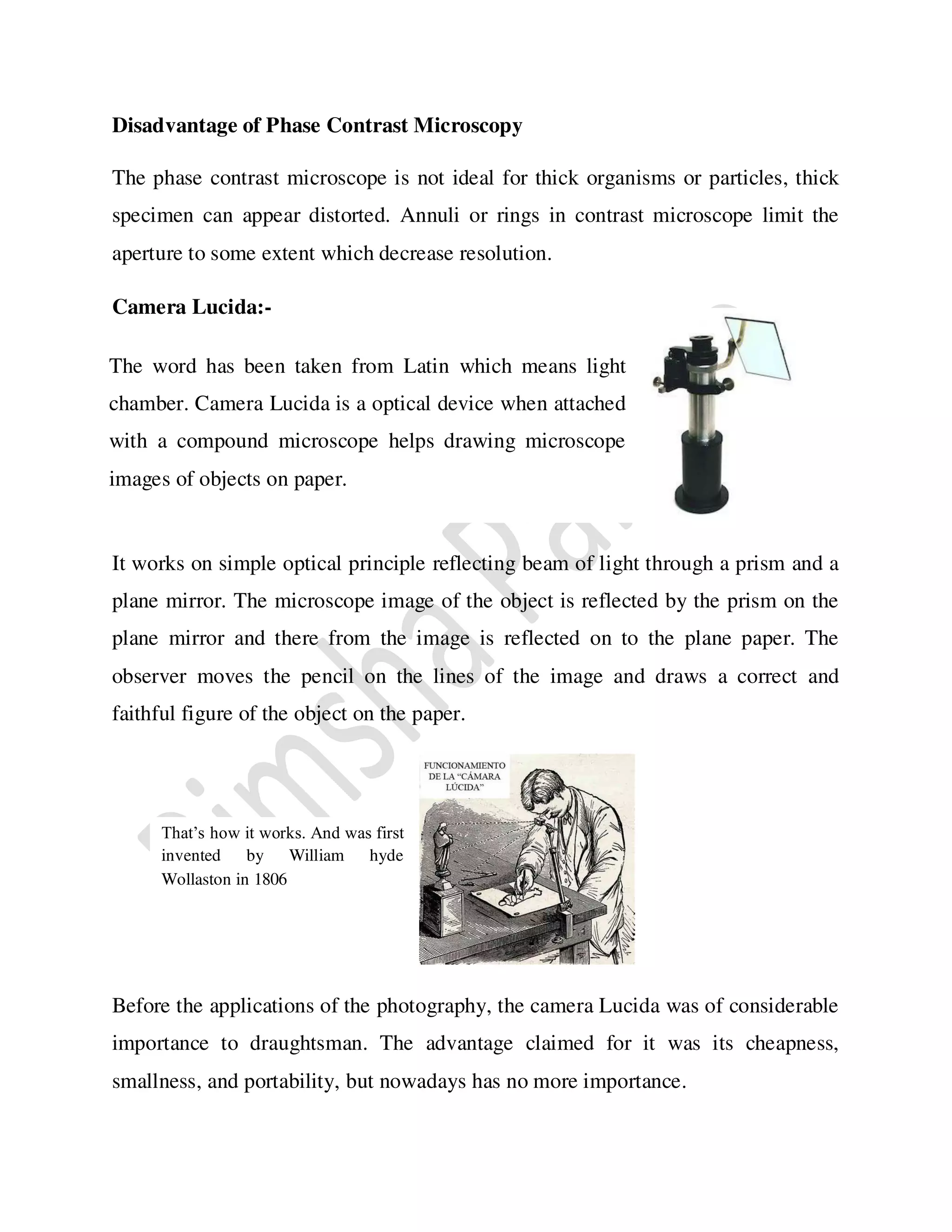This document discusses different types of microscopes, including their history, parts, uses, and key features. It describes:
1) The early compound microscope invented by Jansen, capable of 3-9x magnification. Compound microscopes can magnify 40-1000x and have a resolution of 0.25um.
2) Electron microscopes, which use electron beams rather than light and have much higher resolutions of 1-10nm. Scanning electron microscopes provide 3D images while transmission electron microscopes have higher magnification but only show black and white 2D images.
3) Other microscope types like binocular, darkfield, and phase contrast microscopes and their applications in biology research. Pre

